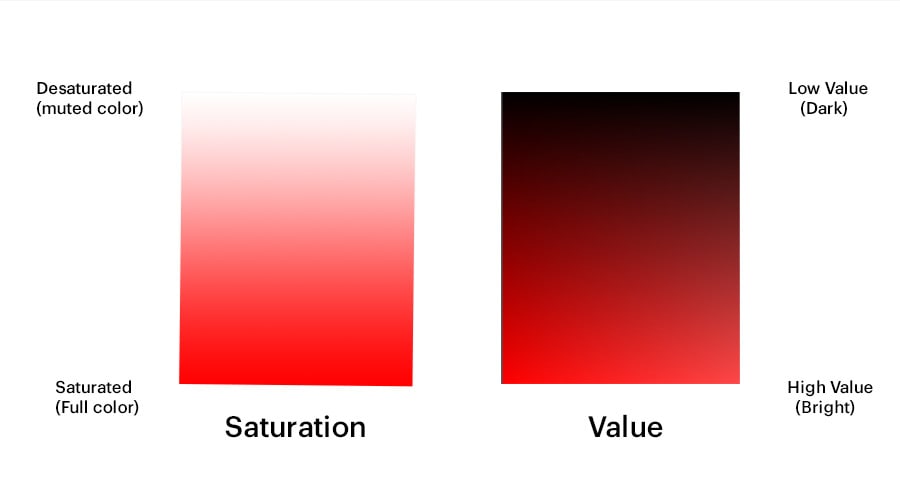Estimated reading time: 4 minutes
Colour theory can play an important role in your small business branding. Colours carry meaning, and the colours you choose for your business can have an impact on brand recognition and perception.
To better understand this, Reboot, an SEO marketing agency, created logos for five fictitious companies and showed them to their study participants. After giving them 10 minutes to study the logos, 78% were able to recall the primary colour of the logo, compared to only 43% who were able to remember the company name.
Learning how to choose your brand colours (and mix and match different hues) gives you the confidence and know-how to build a memorable identity. Here, we’ll go over everything you need to know about picking the right colours for your small business.
- Rediscover the colour theory wheel.
- Understand warm and cool brand colours.
- Combine colours that work for your brand.
- Look for inspiration.
- Put it all together.
1. Rediscover the colour theory wheel.
To kick off this colour theory refresher, let’s start with an art basic (you might’ve even learned about it in science lessons at school!). Also known as the colour wheel, this is your cheat sheet on how to pick brand colours that work well together.
Sir Isaac Newton developed the first circular diagram in 1666 as part of his research into the behaviour of light. Using a lamp, Newton ran white light through an optical prism to separate it into a rainbow of colours. Scientists had seen the light-through-glass trick before, but assumed the lens somehow coloured the light. However, by reflecting the coloured beams into another glass crystal, Newton reformed them back into white light. This experiment, for the first time, proved that colours were a characteristic of the light itself.
Newton’s 12-colour wheel consists of:
- 3 primary colours (red, yellow, blue)
- 3 secondary colours (created when you mix primary colours: green, orange, purple)
- 6 tertiary colours (the in-between colours made from primary and secondary colours, like blue-green or red-violet)
VistaPrint Tip
Need help creating the perfect palette for your brand? Check out VistaCreate’s colour palette generator to find a colour combination that looks great together.
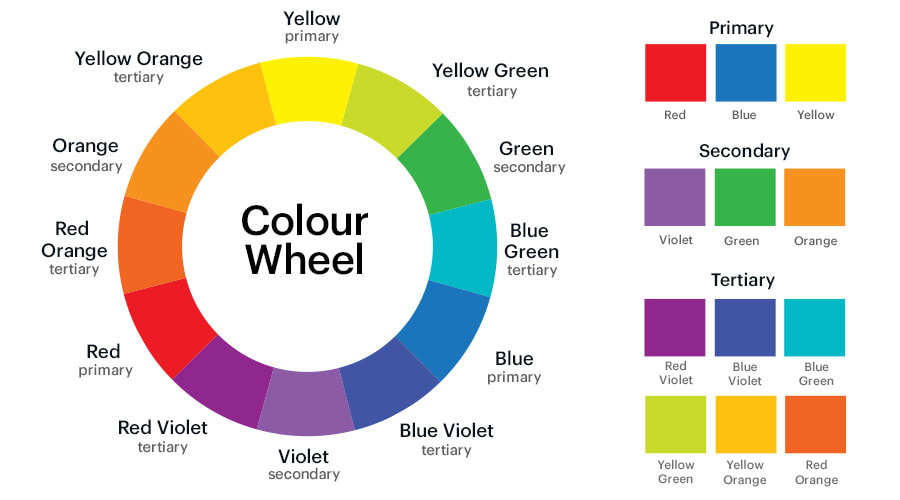
2. Understand warm and cool brand colours.
The colour wheel reveals the difference between warm and cool colours. When you split the wheel in half, one side of the wheel shows warm colours: red, orange and yellow (and variations of these three colours). These colours are intense, energetic and vibrant. Warm colours like red can be used to imply passion or strength. Red also stimulates the appetite and attracts attention. This active reaction is often used by brands to get people’s attention.
Are you running a flash sale to move old stock? There’s a very good reason that SALE signs often use red…it stands out. Orange is a good choice if you want to promote child-friendliness, cheerfulness and optimism. It confidently calls people to action and creates a sense of enthusiasm. Yellow is another positive colour that’s often used to grab attention. Given its association with sunny weather, it’s a popular choice for businesses in the travel and tourism sector.
On the other side of the wheel are the cool colours: green, blue and violet. These are more subdued and convey a sense of calm and tranquility. People associate green with nature, environmental consciousness and sustainability. Greens are also linked to spring and rebirth, making them a good option if you offer health, wellness or education services. Blue is generally associated with competence and trustworthiness. So, a blue colour scheme or accent could be an appropriate choice for businesses as diverse as financial institutions and child or pet care. Basically, any business that needs to look reliable and secure.
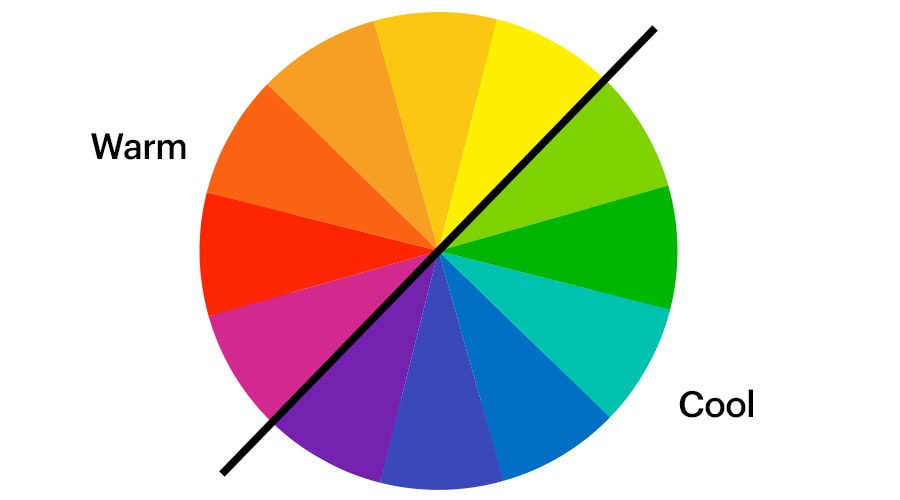
3. Combine colours that work for your brand.
Your brand colour palette will extend across a range of touchpoints with your business, while your logo may only include one or two colours. You’ll want to employ this palette for tools beyond your logo, like your website, shop-front banners, brochures and staff uniforms.
Colour formulas provide a foolproof way of using the 12-part colour wheel to pick the perfect colour combinations. And don’t worry — you don’t need to be an algebra expert to get your head around this equation.
Here are a few colour formulas to try:
- Monochromatic. Pick one colour from the colour wheel and adjust the saturation and value to create variations of that colour.
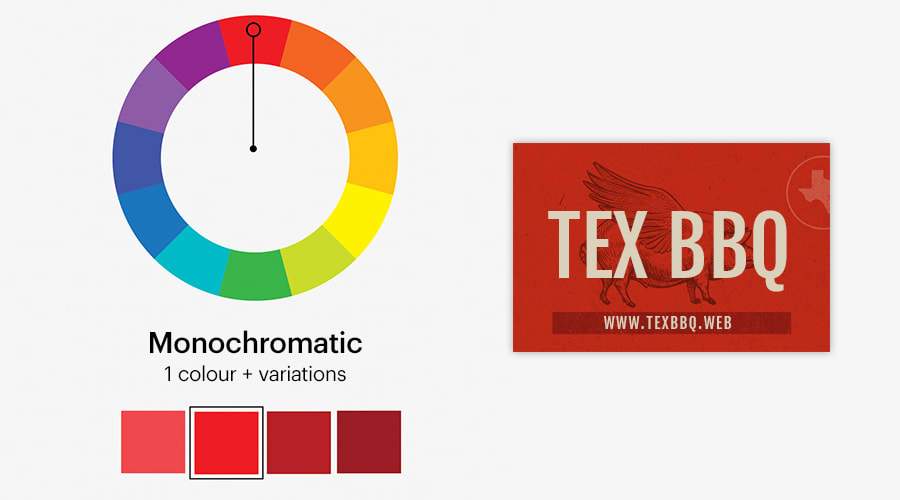
- Analogous. Choose three colours that are side by side on the colour wheel as the basis of your colour scheme.
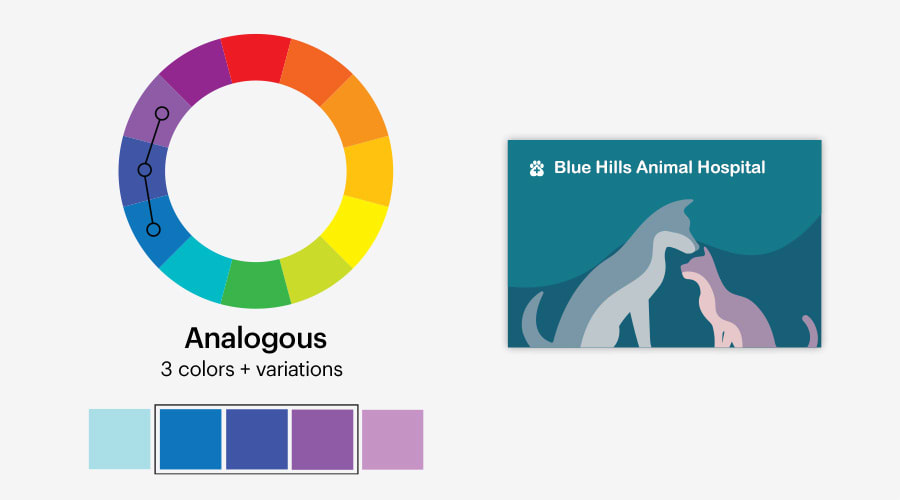
- Complementary colours. Choose two colours that are opposite each other on the colour wheel. Start with the two opposite colours and then add variety by playing around with the saturation and value.
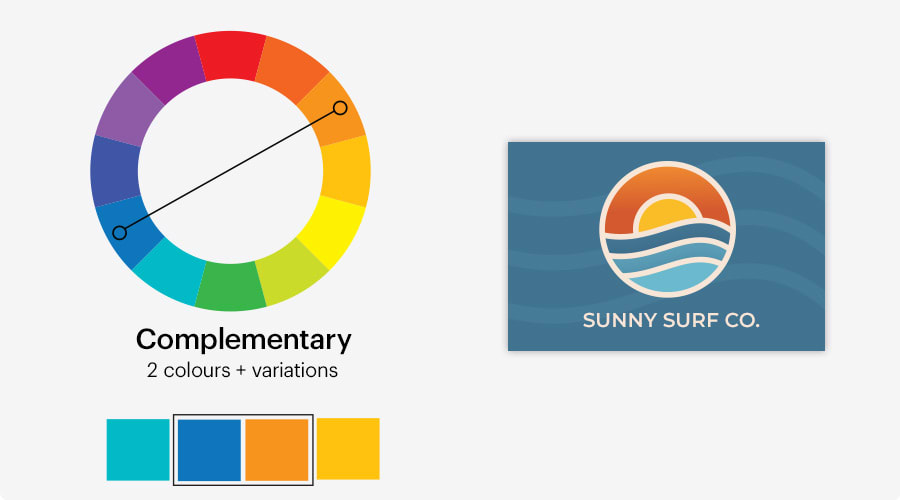
- Triadic colours. Choose three colours that are evenly spaced, forming a perfect triangle on the wheel…and then find the perfect colour combination by adjusting saturation and value.
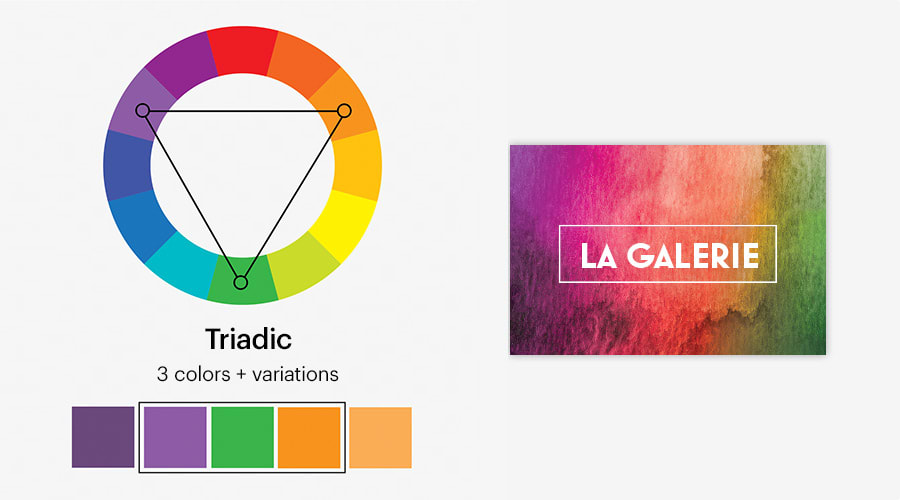
4. Look for inspiration.
Once you’ve learned the basics of colour theory, use the colour formulas above as a starting point for experimentation. Take inspiration from the world around you, whether in nature, food, fine art…the possibilities are endless. Try to look for inspiration in places that reflect your brand personality. For example, if you run an outdoor supplies business, you might look for inspiration at a nearby campsite or hiking trail. From there, choose 3-4 colours from that scene to compose your colour palette and use these colours consistently across your branding.
5. Put it all together.
Now that you know a few basic techniques around how to choose your brand colours, there are a few things to consider when perfecting your palette.
- Beware of brand colours that vibrate. When you place two colours too similar in value next to each other, they can create a vibrating effect that’s harsh on the eyes and impossible to read. Instead, try adjusting the contrast of the image by toning down the saturation, hue or value.
- Avoid large areas of light text on dark backgrounds. If you need to include a large amount of text, stay away from light text on a dark background. It’s often too high in contrast and makes it hard for people to read.
- Pick neutral colours to balance the design. Be sure to make use of neutral colours like white, black and grey. Surrounding bright colours with neutrals makes your design appear well balanced.
- Use contrast to make important info pop. Use colour selectively for elements you want to stand out the most — like your logo and company name.
- Consider how your brand colours make people feel. By understanding the common associations with different colours, you can create a colour scheme that elicits certain feelings, like security and trustworthiness.
- Look around you for colour inspiration. Whether it’s another business you admire, an image with an attractive blend of colours or a trend you’ve spotted in the world of fashion, you can find colour inspiration anywhere.
- Refer back to the colour wheel if in doubt. If you don’t feel comfortable borrowing a palette from somewhere else, use the formulas mentioned above to make sure the colours you pick work well together.
Colour terminology
Tint: A colour made lighter by adding white.
Shade: A colour made darker by adding black.
Tone: A colour that is muted by adding grey.
Hue: Another word for a colour.
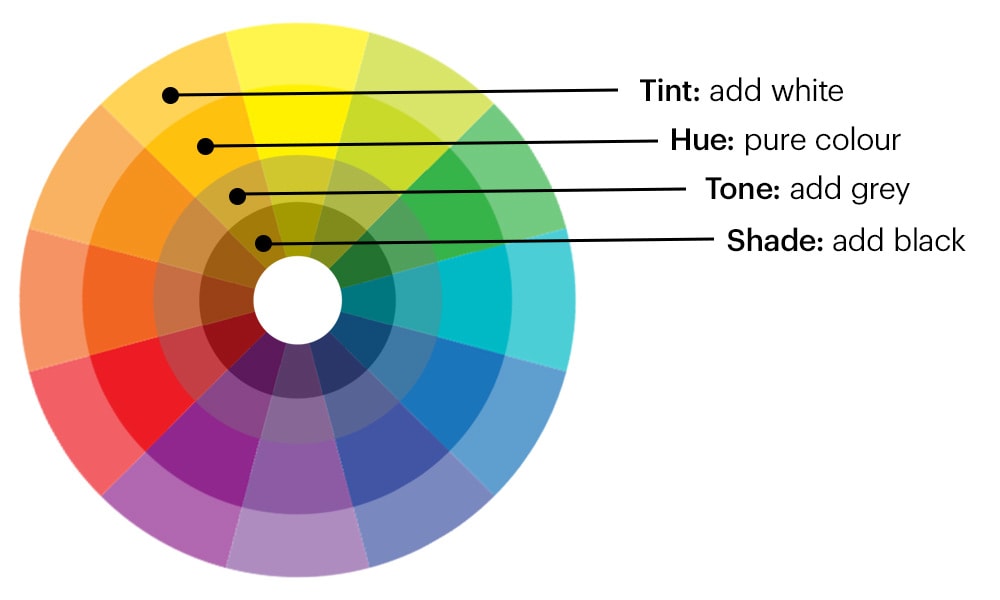
Saturation: The intensity of a colour (saturated colours are brighter and more intense).
Desaturation: Colours which have less pigment and are more muted.
Value: Refers to how light or dark a colour is.
Neutral colours: Black, white and grey.
